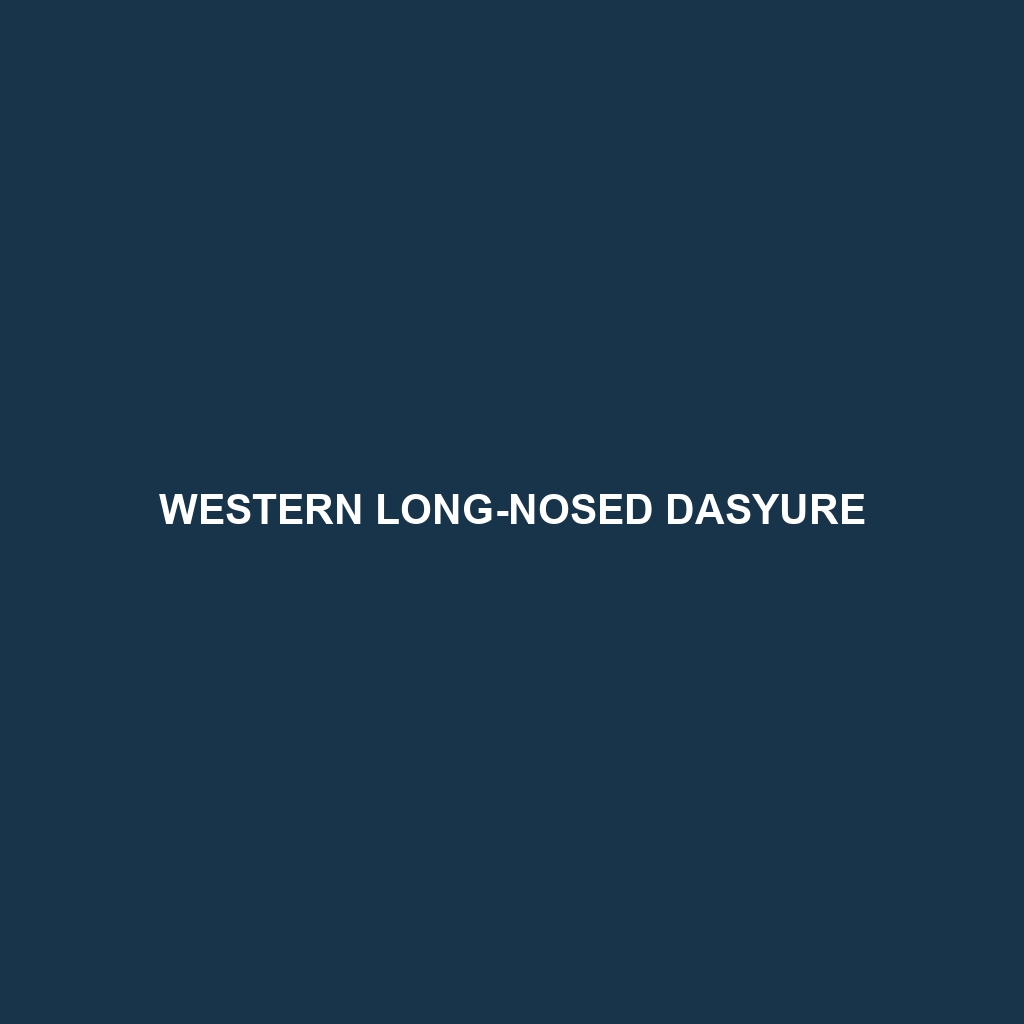Western Long-nosed Dasyure (Dasyurus spartacus)
:
The Western Long-nosed Dasyure, also known as Dasyurus spartacus, is a small carnivorous marsupial native to the dense forests and woodlands of Western New Guinea. This elusive creature is known for its slender build, elongated snout, and strikingly patterned coat. Adapted to a nocturnal lifestyle, the Western Long-nosed Dasyure is a solitary hunter with a diet consisting primarily of insects, small mammals, and birds.
Physical Characteristics:
Size: Adult Western Long-nosed Dasyures typically measure between 25 to 35 centimeters in body length, with an additional tail length of 20 to 30 centimeters. They weigh around 600 grams to 1 kilogram.
Coloration: Their fur is dense and soft, ranging from dark brown to black, adorned with white spots scattered across the back and flanks. The underbelly is usually lighter, often a creamy white or pale grey.
Special Features: One of the most distinctive features of the Western Long-nosed Dasyure is its elongated snout, which aids in sniffing out prey. They have sharp, retractable claws adapted for climbing and grasping.
Behaviors:
Social Interactions: These dasyures are predominantly solitary animals, coming together only during the breeding season. They are territorial and mark their areas with scent markings.
Feeding Habits: As opportunistic feeders, they primarily hunt during the night. Their diet includes insects, small mammals, birds, and occasionally fruits and berries. They use their keen sense of smell and agile movements to capture prey.
Ecological Roles: Western Long-nosed Dasyures play a crucial role in controlling the population of insects and small animals in their ecosystem, contributing to the overall balance of their habitat.
Habitats:
Western Long-nosed Dasyures inhabit the dense, humid forests of Western New Guinea, often found in both lowland and montane regions. They prefer areas with ample ground cover and abundant tree trunks and branches for climbing and shelter.
Adaptations:
Nocturnal Lifestyle: Adapted to a nocturnal lifestyle, they have excellent night vision and heightened senses of smell and hearing for hunting in the dark.
Climbing Abilities: Their sharp claws and strong limbs allow them to climb trees and navigate through their forested environment with ease.
Camouflage: The spotted pattern of their fur provides effective camouflage against the forest floor, protecting them from predators and aiding in their stealthy hunting approach.
Conservation Status:
The Western Long-nosed Dasyure is currently classified as Near Threatened on the IUCN Red List. The primary threats to their survival include habitat destruction due to logging and agricultural expansion, as well as predation by invasive species. Conservation efforts are focused on habitat preservation and mitigating human-wildlife conflicts.
Fun Facts:
Despite their small size, Western Long-nosed Dasyures are formidable hunters, capable of taking down prey larger than themselves.
They have a unique way of communicating through a series of vocalizations, including clicks, hisses, and growls.
The Western Long-nosed Dasyure’s elongated snout is a specialized adaptation that allows them to probe into narrow crevices and under leaf litter for hidden prey.
By understanding the various attributes and ecological significance of the Western Long-nosed Dasyure, we can better appreciate this remarkable marsupial and contribute to its conservation.
